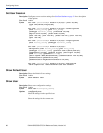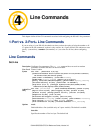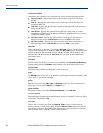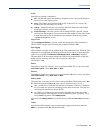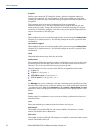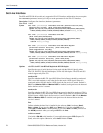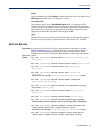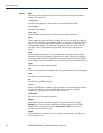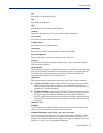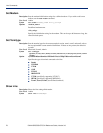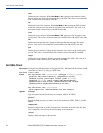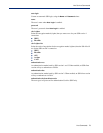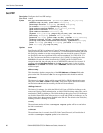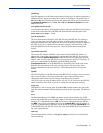
Line Commands
74 IOLAN SDS/SCS/STS CLI Reference Guide, Version 3.6
Options bidir
This service allows the IOLAN listen for incoming TCP connection and if needed,
initiate a TCP connection.
<config_host>
The name of the target host. The host must exist in the IOLAN host table.
<server_port>
The IOLAN port number.
<host_port>
The port number the target host is listening on for incoming connections.
direct
Direct connections bypass the IOLAN, enabling the user to log straight into a specific
host. A direct connection is recommended where a user logging in to the IOLAN is not
required. It is also recommended where multiple sessions are not a requirement. The
message
Press return to continue is displayed on the users screen. The user
must press a key to display the host login prompt. The message is redisplayed on
logout.
silent
Silent connections are the same as direct connections, except they are permanently
established. The host login prompt is displayed on the screen. Logging out redisplays
this prompt. Silent connections, unlike direct connections, however, make permanent
use of pseudo tty resources and therefore consume host resources even when not in use.
rlogin
Sets the line for a remote login connection.
raw
Creates a connection where no authentication takes place and data is passed unchanged.
telnet
Sets the line for a telnet connection.
ssh
Sets the line for an SSH connection.
reverse
Enables a TCP/IP host to establish a login connection on an external machine attached
to a port. For example, to access machines like protocol converters, statistical
multiplexors, or machines like routers, firewalls, servers, etc.
client-tunnel
Sets the line for a client tunnel connection.
dslogin
The default connection. The IOLAN displays a login on that line. For example,
DSLogin is used when a System Administrator configures the IOLAN, providing
authentication of a user before starting a
User Service of SLIP, or users starts a
session(s) from the IOLAN to hosts.
printer
Using the IOLAN as a printer server. For example, remote printing using LPD (port
515) or RCP (port 514).



